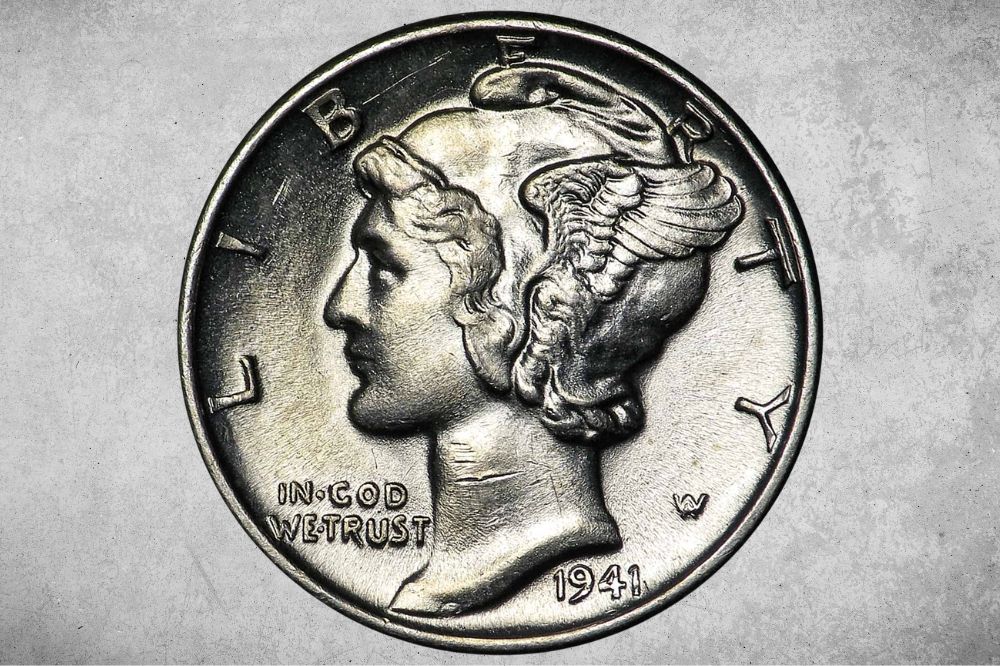Originally named the Winged Liberty Head Dime, the resemblance of the bust of Lady Liberty to the Roman god of commerce, Mercury, is why the Winged Liberty Head Dime is called the Mercury Dime to this day.
The 1941 series of the Mercury Dime, borne from the coin design contract Adolph Weinman won in 1916 was struck the year the United States entered World War II. It is highly coveted by numismatists and newbies alike.
Here, we’ve made it our duty to provide details that set the 1941 mercury dime apart from other 20th-century United States coins. You’ll get to know the history of this coin and the varieties available. Information on grading your coin to determine its value is also available.
1941 Mercury Dime Detail
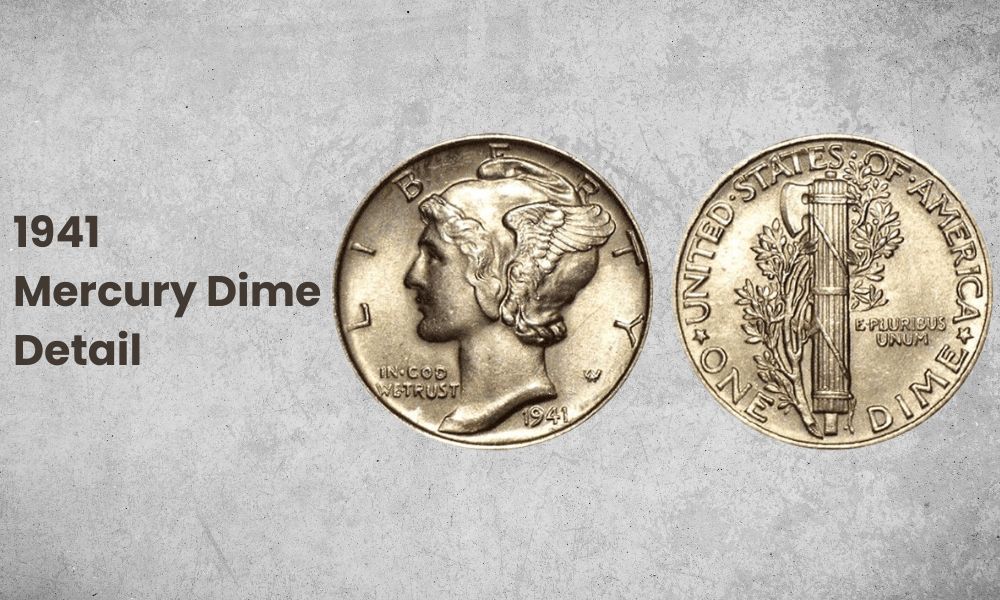
- Category: 1941 Mercury Dime Value
- Mint: Philadelphia, Denver, and San-Francisco
- Total Mintage: 263,830,557
- Obverse Designer: Adolph A. Weinman
- Reverse Designer: Adolph A. Weinman
- Edge: Reeded
- Diameter: 17.9mm
- Thickness: 1.5mm
- Composition: 90% Silver, 10% Copper
- Weight: 2.5g
- Fitness: 0.9
The 1941 Dime, made from 90% silver and 10% copper, is another of Adolph A. Weinman’s designs featuring Lady Liberty. Let’s look at the coin’s obverse and reverse in detail.
The Obverse
Turning the coin to its obverse, you will find a bust portrait of Lady Liberty. Here, Liberty adorns a close-fitting Phrygian cap. Her face is leftwards, and “IN GOD WE TRUST” is written below Liberty’s chin. Under the neck and quite close to the coin’s 5 ‘0 clock position is the production date, “1941”.
Other features on the obverse include the word “LIBERTY” spelled close to the coin’s rim and an “AW” mark placed to the right of Liberty’s neck; this stands for Adolph Weinman’s initials.
The Reverse
On the reverse side of the coin, you will find a Roman Fasces (a vertical arrangement of sticks sheathing an ax to make the ax’s handle stronger). The ax head faces the left of the coin.
Also, olive branches are at the fasces’ right and left, and the famous phrase, E-PLURIBUS UNUM, is placed to the right and center of the fasces.
Other details on the reverse of the mercury dime include the words ONE and DIME spelled out but separated by the lower end of the fasces.
Also, you’ll find two stars on the reverse, one on each side (left and right). The “UNITED STATES OF AMERICA” is spelled out and it extends across the top of the coin.
Other Notable features on the reverse include a mint mark. It is located just below the olive branches to the coin’s left.
1941 Mercury Dime Value Chart |
||||
Mint mark |
Good |
Fine |
Extremely Fine |
Uncirculated (Mint State) |
| 1941 No Mint Mark Mercury Dime Value | $2.43 | $3.51 | $4.04 | $8.45 – $35 |
| 1941 “D” Mint Mark Mercury Dime Value | $2.43 | $3.51 | $4.04 | $9.73 – $29 |
| 1941 “S” Mint Mark Mercury Dime Value | $2.43 | $3.51 | $4.04 | $14 – $35 |
1941 Mercury Dime and Varieties Guides
1941 mercury Dimes are available in different varieties. To distinguish these varieties, you must examine the coin for the presence or absence of mint marks. Here is a collection of the different mercury dime varieties available.
1941 No Mint Mark Mercury Dime Value
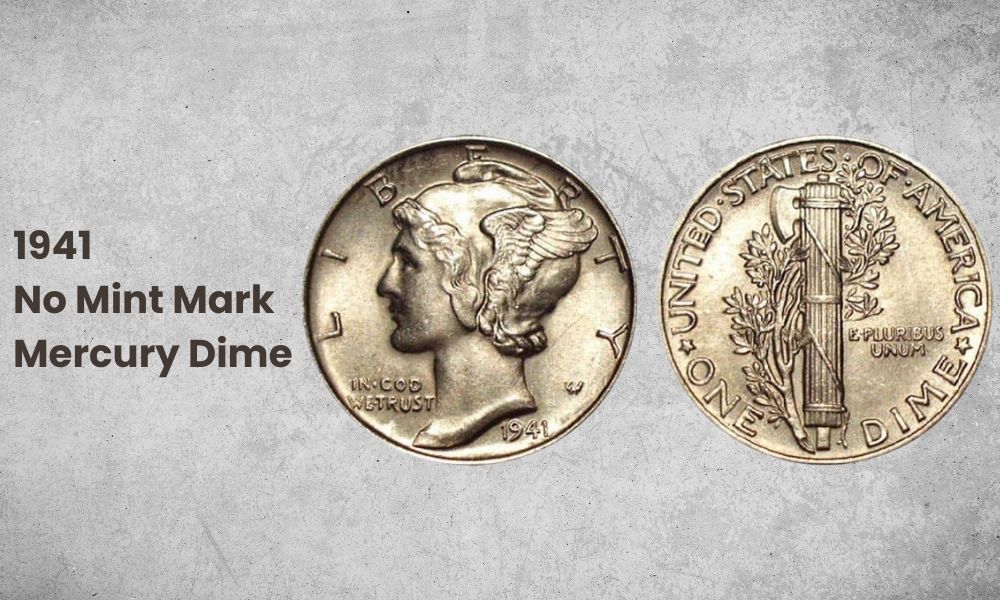
- Type: Mercury Dime
- Edge: Reeded
- Mint mark: None
- Place of minting: Philadelphia
- Year of minting: 1941
- Face value: 10 cents
- Dollar price: $2.43 – $35
- Melt Value: $1.4649
- Quantity produced “Regular Strike”: 175,090,000
- Quantity Produced “Proof Coin”: 16,557
- Designer: Adolph A Weinman
Due to the booming economy of the United States which was triggered by producing military materials after they joined the ongoing Second World War, the Philadelphia mint had to increase the number of coins they produced significantly.
Two major coin varieties of the Mercury Dime were released from the Philadelphia Mint in 1941, both without any mint marks. They include the Proof mercury dimes, which account for 16,557 of the coins produced, and the regular strike mercury dimes, which totaled a little above 175 million.
Today, several regular strike 1941 mercury dimes still in circulation cost about $2.43 to $35, while the Proof variety sells for at least $100 – $300. This price disparity is because of Proof coins’ shiny, mirror-like, and eye-grabbing finishes.
Special dies scrubbed with horse hair brushes and pickled with acid helped the coins struck to attain the level of detail they needed to attain Proof coin status. However, this does not mean that every 1941 Mercury Proof dime out there is more valuable than a regular strike one.
Auction records show that mint-grade 1941 mercury dimes having Full Bands or Full split Bands are expensive. An MS68+ full band regular strike 1941 mercury was sold for $17,625 by Legend Rare Auctions in September 2019.
Full split Bands are sought after because of the difficulty the mint experienced in ensuring that the horizontal lines in the fasces of the original design appeared on the circulated coins. Although getting them to appear proved difficult due to the minting limitations, coins with full split bands are coveted by collectors.
1941 “D” Mint Mark Mercury Dime Value
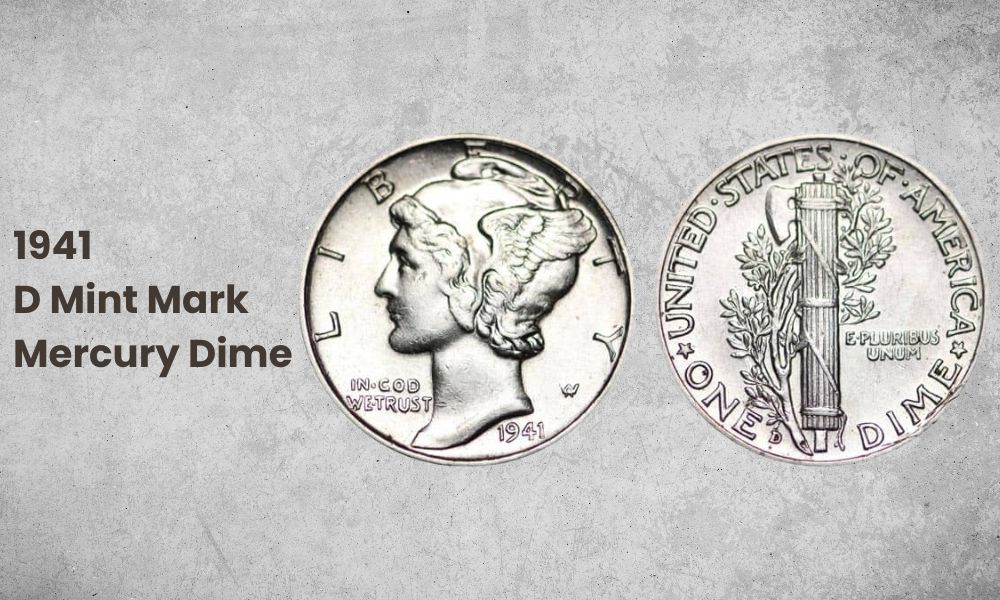
- Type: Mercury Dime
- Edge: Reeded
- Mint mark: D
- Place of minting: Denver
- Year of minting: 1941
- Face value: 10 cents
- Dollar price: $2.43 – $29
- Melt Value: $1.4649
- Quantity produced: 45,634,000
- Designer: Adolph A Weinman
Next on the varieties list for 1941 Mercury dimes are those with the Denver Mint’s mint mark “D.” The Denver mint churned out more than 45 million D mint mark coins.
The coins produced in Denver during this period are valued at $2.43 to $29, costing even less than the No mint mark coins from Philadelphia.
Although to determine the actual grade of any coin, you need to consider the coin’s condition and the presence or absence of errors, an MS68+ grade Denver mint Mercury Dime from 1941 was valued at $423 in 2016, even though in the year 2000, one of a similar grade sold for $5290
1941 “S” Mint Mark Mercury Dime Value
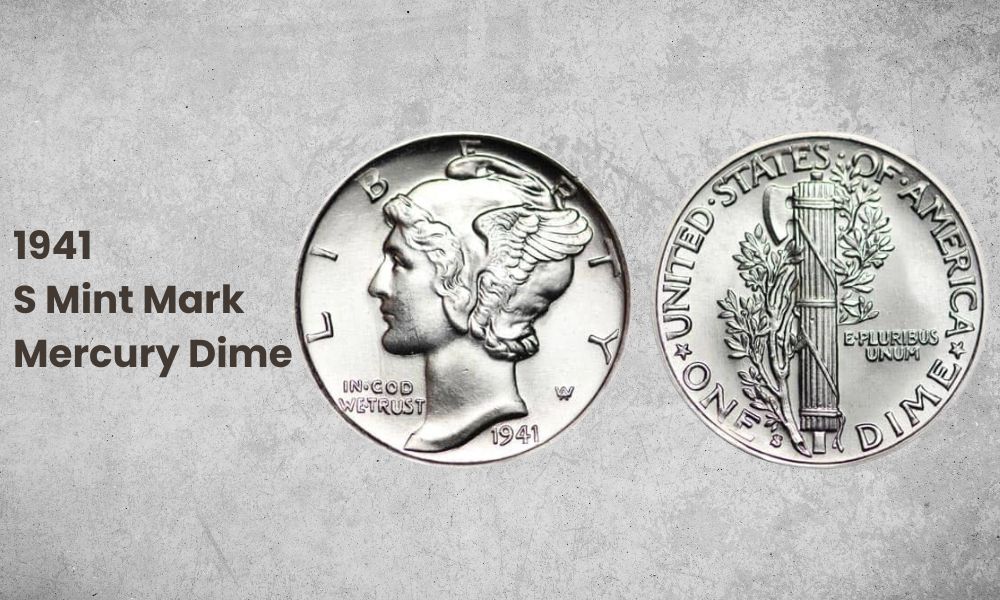
- Type: Mercury Dime
- Edge: Reeded
- Mint mark: S
- Place of minting: San Francisco
- Year of minting: 1941
- Face value: 10 cents
- Dollar price: $2.43 – $35
- Melt Value: $1.4649
- Quantity produced: 43,090,000
- Designer: Adolph A Weinman
The final variety worthy of mentioning is that of the San Francisco mint. The mint produced 43 million 1941 Mercury Dimes in that year, which was double the number produced the year before. Coins from this mint still in circulation today range from $2.43 – $35. However, several of the coins produced had errors.
One of the more notable errors was that some coins had small “s” marks while some had a large “S” mark. This error was caused by using the wrong hand punch.
The United States minted coins for countries like Cuba, Peru, and Belgium. So, when hand punches meant for Filipino coins were mistakenly used for Mercury dimes, inconsistency in the sizes of the “S” mint mark from San Francisco minted Mercury dimes of 1941 were created.
In 2006, an MS68 grade full band San Francisco 1941 mercury dime went on sale for $28,175.
Also Read: Top 15 Most Valuable Indian Head Penny Worth Money
1941 Mercury Dime History
In 1916 when the barber dimes went extinct, it paved the way for new coins like the Mercury winged liberty head dimes. These newly circulated coins dominated the United States Mint until it was discontinued in 1945 due to the effects of the great depression of the 1930s.
Officially, the US mint called these coins the Winged Liberty Head; however, Americans noticed the likeness between the Liberty’s face and Mercury, the Roman god. So, they opted to call them mercury dimes.
The mercury dimes story opens with the competition held by the mint officials to determine whose designs would grace the obverse and reverse of the new dime, quarter, and half dollar coins. Mint Chief Engraver Charles E. Barber was among the competitors, but the officials favored Adolph Weinman for dime and half-dollar design.
Many believed that Elsie Stevens, the wife of Wallace Stevens, a lawyer, and poet, was the model from which Adolph Weinman drew his inspiration while creating this coin’s obverse.
These claims remained unverified until Robert W. Woolley’s unpublished autobiography confirmed that Adolph had once told the Mint Director that the mercury dime design was based on the lawyer’s wife renting his apartment.
The story here is Elsie Stevens had rented an apartment from Adolph Weinman and was living there around the same time these designs came to light.
Conversely, the reverse includes a fasces, symbolizing the nation’s strength and unity, and an olive branch around it, symbolizing peace. As distinct as this design was, the US mint had to alter them because coin testers had difficulty making these coins work with vending machines.
The 1941 mercury dimes were produced the same year as the attack on pearl harbor. This link with history is another reason it is sought after by various coin collectors. These dimes are also fast becoming rare due to high demand.
By 1945, the US mint decided to replace these mercury dimes with new ones. They did this with the new coins designed to honor the death of former president Theodore Roosevelt which meant the end of production for the 1941 mercury dimes.
However, mercury dimes with high mintages are still pretty common thanks to coin collectors around the US who were able to save millions of these coins combined, making them accessible today.
2016 brought about a new light for these mercury dimes when the US mint struck these coins again to celebrate its centenary while retaining its original Adolph Weinman obverse and reverse design.
Also Read: Top 15 Most Valuable Roosevelt Dimes Worth Money
1941 Mercury Dime Grading
Understanding the Sheldon scale is crucial when determining the grade of a coin. This scale, which starts at poor (P-1) and extends to perfect mint state (MS-70), is adopted by professional numismatics to classify coins into different grades.
List of 1941 Mercury Dime Errors
Errors from US mints are known to push up the value of coins bearing these errors. This section has compiled a list of errors common to the 1941 Mercury Dimes.
1. 1941 Mercury Dime Double Die Obverse and Reverse Error
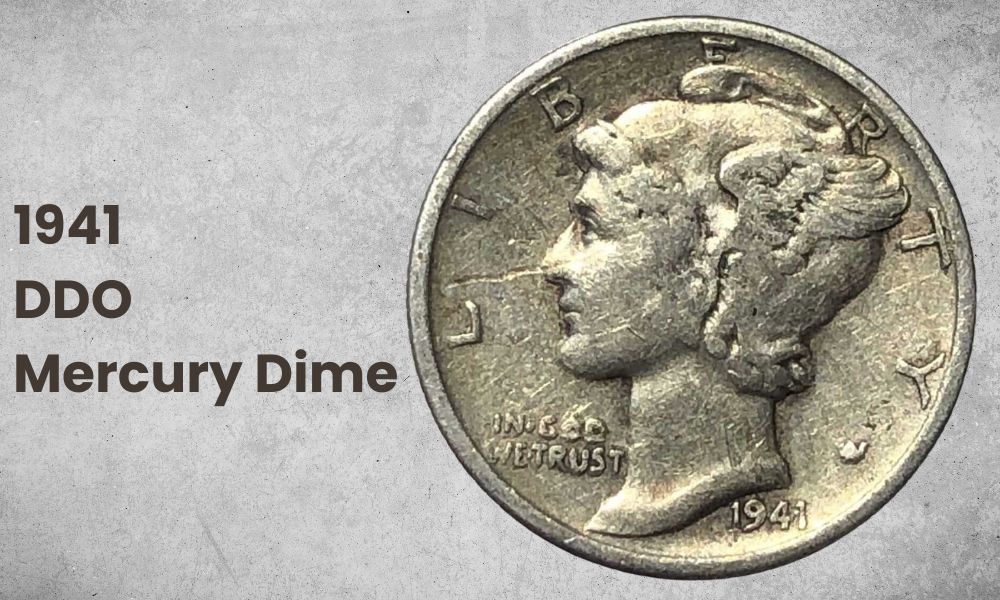
The double die obverse and reverse error is one error common to coins from the Philadelphia and Denver mint. These errors, also called DDO or DDR errors, occur on the obverse and reverse of the coin due to mistakes from the die-hubbing process. It results in two identical images visible on the coin. These two images will be off slightly.
NB: Double die errors are different from double strike errors. The die itself has double images for the double die, resulting in slightly misaligned images. The die strikes the coin twice for double-strike errors, creating a double effect.
2. 1941 Mercury Dime 1942 Over 1941 Overdate Error
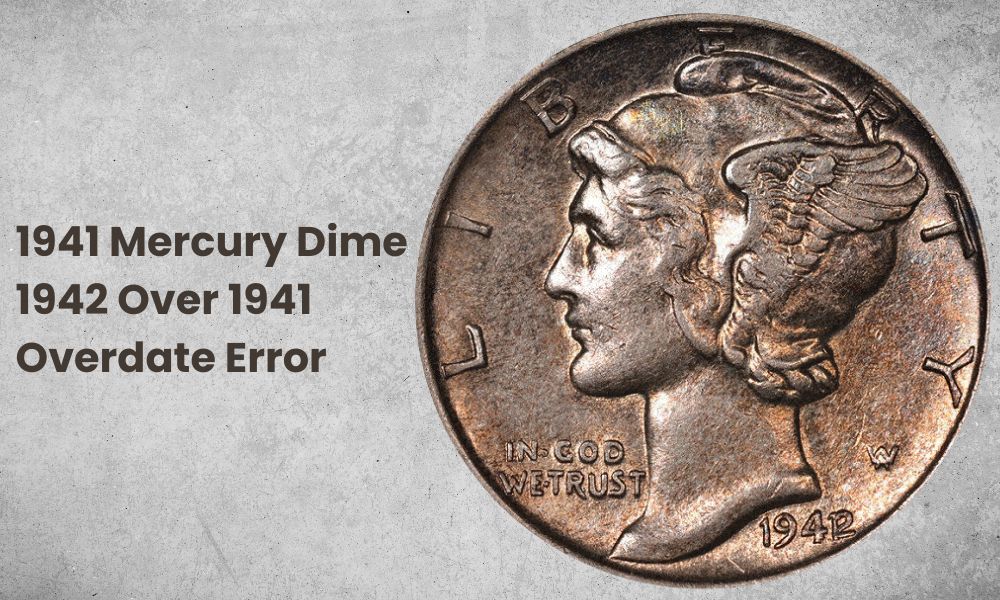
In this date error common to dimes from the Philadelphia and Denver mint, you will find the “1” under the “2”.
The likely reason for this error is that a 1941 die struck the coin first; a 1942 die struck that same coin after striking it. If you find errors of this nature, expect to get a hefty sum for it. A particular MS67+ grade mercury dime with an overdate error sold for $90,000 in 2018.
3. 1941 Mercury Dime Re-punched Mark Error
A re-punched mark error on the 1941 mercury dime occurs when a repeated mint mark is on the same or very close to the mint mark position. It occurs when subsequent strikes of the hand punch are off slightly. It could be an S over an S or a D over a D.
1941 Mercury Dime FAQs
Which 1941 Mercury Dime is Rare?
The rarest 1941 mercury dimes were the 1941 Proof Mercury dimes minted in Philadelphia. They are rare and coveted because there are only a few of them. Also, their excellent luster, finish, and the fact that the mint only produced 16,557 of them contribute to their rarity.
What is the Most Expensive 1941 Mercury Dime Sold?
The most expensive mercury dime of 1941 sold is a regular strike Full band MS 86 grade dime minted in San Francisco. Professional coin Grading service reports that it sold for $28,175 at a Bowers & Merena auction.
